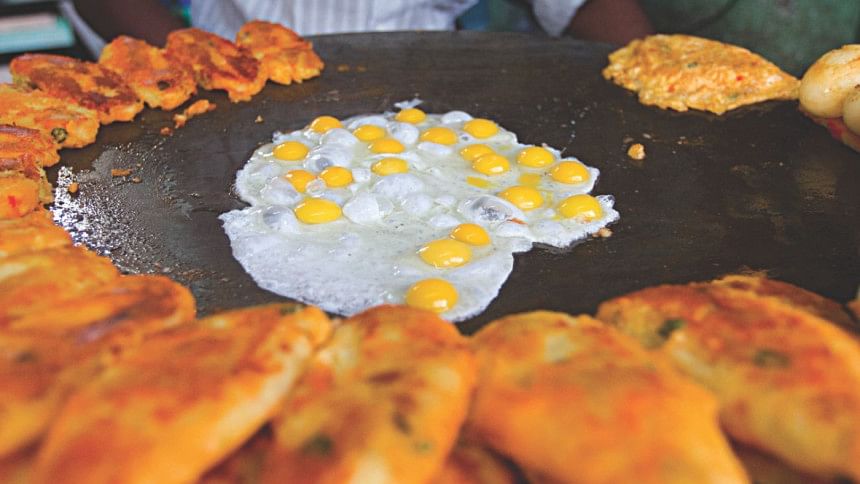Food bonanaza in the camp

Having heard so many stories and growing up so close to the place itself, it was time for me to explore it on my own. With a lot of excitement and a bit of apprehension, a couple of friends and I decided to work on an assignment and also look at the transitions and narratives of history that affected the lives of so many people.
We met in front of a landmark that absolutely anyone would recognise – Mustakim -- which is actually situated right outside the premises of the Bihari Camp. Looking through the long narrow buildings shooting upwards for a lack of space on the ground itself, we see a growing population of budding generations of children.
Looking at the preparations of all the stores, which only start operation at dusk, we decided to venture inside the camp before absolute darkness. We were immediately dazzled by the lights and the gleaming saris that lined the shelves on either side of the narrow street. This led us to the next lane that showcased daily wear, school bags and utensils, besides other essentials. Walking further in, the aroma of biriyani was difficult to miss and that led us to one of everyone's favourite place, as I learned later, Bobar Biryani.
The unique name has its roots in the fact that the chef himself is mute.
Even though we already had lunch, we were not going to be foolish enough to miss a plate. We were glad of our decision because we had some of the best kachchi there.
Bellies full to the brim, we finally got to work. However, this was not without having the occasional snack every now and then, and to be honest, we tried everything we saw.
From the small puri brimming with steaming spicy potato and dal filling, to the crispy round vegetable pakoras, nothing missed our sinfully gluttonous stares.
We even shared crispy luchi over a plate of chicken chaap made to order right in front of us. The flavours so devilishly tantalising, with hot bits of crunchy spicy chicken melting in the mouth followed by mouthfuls of luchi wrapped around the juicy chicken meat and cool cucumber salad dressed in a green chutney to contrast the texture -- I am tempted to go back in time.

Having said so, the chaap was not even the best part of that evening, as we were walking back, we spotted a red-haired man with a bald spot and a heavy moustache vigorously fanning at his small portable grill.
It was not long before we followed the smoke rising into the air and were quickly inquiring what the small sheeks were pierced onto, and we found to our glee, that he made khiri kabab, chicken and beef kababs and kolija.
Again, the sheeks were made to order and we could see the colour of the cubed bits of meat transforming from light and dark pinks to dark browns and then almost black from the heat and the char. The vendor kept the kababs moist by brushing on a mix of wet spices and oil which sizzled into smoke as drops of it fell onto the small bed of red hot burning coal underneath the mesh net which was bedding for the small meat cubes.
Ready in about five minutes, a final dusting of rock salt and a spice mix, the sheeks disappeared in quick succession, and following this we learnt that the bill was not even half as generous as the food was, paying only ten or fifteen takas per sheek.
A few steps away, we found yet another man selling sweets out of a sky-blue tub, arranging the sweets on an aluminium tray lined with a red cloth, and of course, we took our favourite kinds since, surprisingly, this man boasted a wide variety of choices — laddus, chana misti, kalo jaam, pantua, kacha golla and even baked and sliced cakes, all at about five to ten taka a piece. The day had been largely dominated by our gastronomical ventures and we ended the night with just another sweet item which had taken over our social media feeds – the fire paan, which to say the least, is more fun than flare.
Photo: LS Archive/Sazzad Ibne Sayed

 For all latest news, follow The Daily Star's Google News channel.
For all latest news, follow The Daily Star's Google News channel. 



Comments